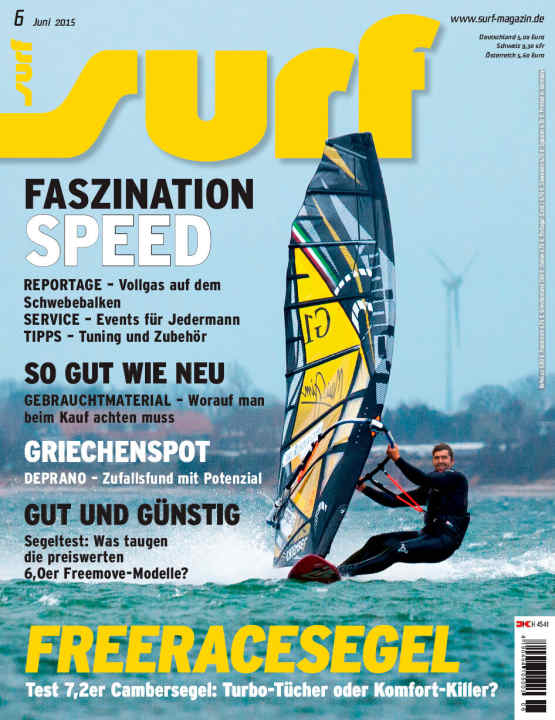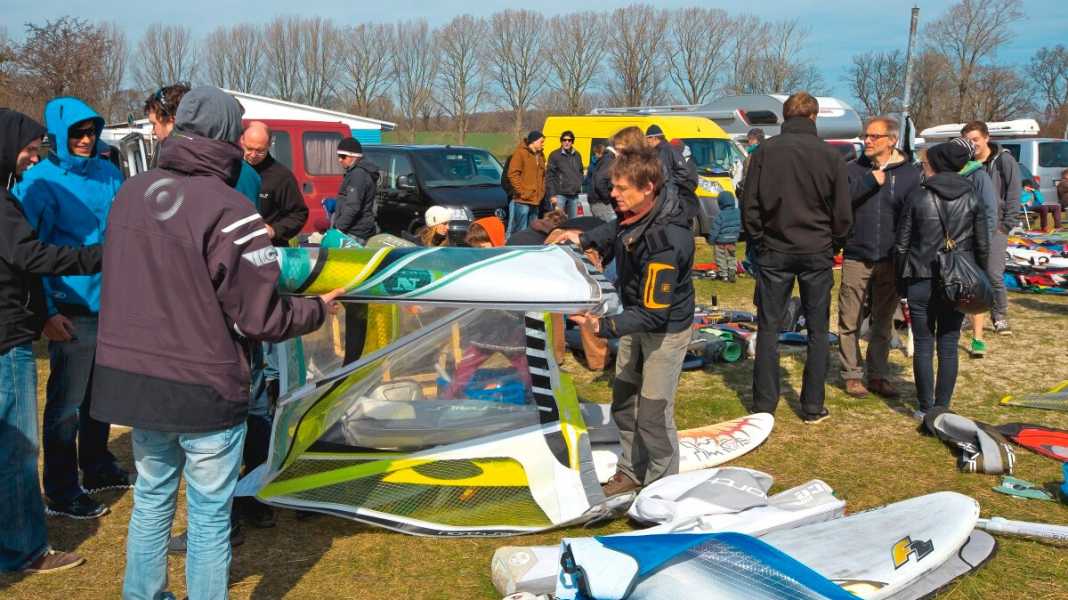
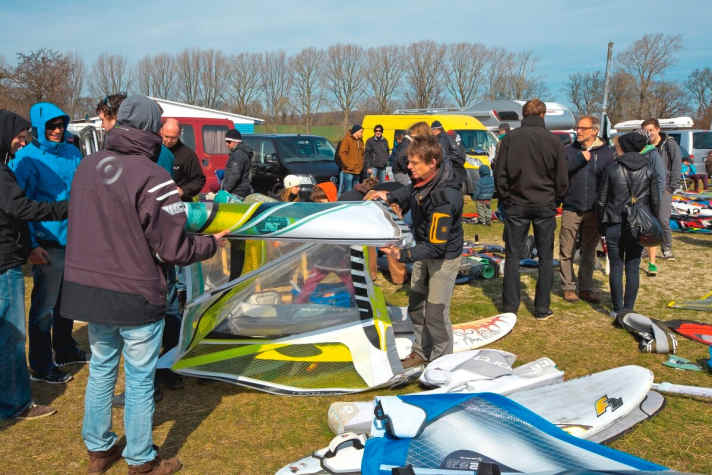
It should be a wave sail over six square metres - as an option in weaker winds and for playing around on the WindSUP. It should also fit on an existing 430 metre mast and not be too expensive. With these ideas in mind, I went looking for it on the usual equipment exchanges, as a brand new cloth would have been out of my budget. If you're not a professional surfer, second-hand equipment is often a good and, above all, affordable alternative. Boards and sails that have already been used for a season or two often only cost a fraction of the new price. It is therefore worth taking a look at the second-hand market, especially for rarely used edge sizes or alternative material. The money saved is then best spent on a short trip to try out the new item straight away.
Where can you find what you are looking for?
Of course, you can get lucky and discover a piece of paper in a surf van at the spot or hit one of the flea markets at the start of the season, but it usually comes down to a visit to the shop or online portals. The advantages of buying from a shop are obvious - advice, the right accessories and a retailer who can't normally afford to take a wrong turn and either scares the customer away or makes them come back to the counter in a huff if they have a problem. Many shops have a certain test quota, which is regularly exchanged. "We sell test equipment from the current season for 40 to 50 per cent less than the original price," explains shop owner Markus van Melle from Windsurfing Hamburg. "Although you can also get new discontinued goods at almost the same price, you're buying a pig in a poke and can't try out the product beforehand or possibly trade in your own."
Nevertheless, by far the largest range is of course available online. In various windsurfing groups on Facebook, in the classified ads on Dailydose, Stehsegelrevue or of course on Ebay. With a little patience, almost everyone can find what they are looking for, but buying online also has its disadvantages: Testing and a detailed check is usually not possible, and there are also shipping costs for large items such as boards or sails. Regional advertising portals or Ebay classifieds can be a good alternative. The sellers are located in the neighbourhood, and viewing and handover can usually be done quickly and in person. However, a significant selection is only available in surfing strongholds.
What about the guarantee?
As a general rule, private sellers can generally exclude warranty services; if the bargain mast flies apart one day after purchase, you're out of luck. Retailers are obliged to provide buyers with a one-year guarantee from the date of purchase, regardless of whether the product was purchased online or directly from the shop. However, certain cases of damage are often excluded here too, for example if a used board becomes soft after a few months or monofilm that has become brittle in the sun tears. Nevertheless, if the worst comes to the worst, you have a contact person who cares about satisfied customers.
When should you buy?
At the beginning of the season, surfing equipment is in high demand, whether online or at flea markets. Between March and June, the supply is moderate, but demand is high due to the season. In addition, there is hardly any current discontinued equipment or professionals who trade in their equipment for new models. As a result, the price level is a little higher than usual. Those who want to sell achieve the best prices on average.
In late summer and early autumn, there will be new movement on the market. This is when the next product cycle for wave and freestyle equipment begins. Many cracks who renew their equipment every year then equip themselves with the new model year and sell boards and sails that are actually still up to date, with prices hovering at around 50 per cent of the list price. For slalom and freeride equipment, the changeover only takes place later in the year. The best time to get hold of a current model is between September and December. If you still haven't found what you're looking for, you'll have another chance at boot Düsseldorf in January before the game starts all over again.
BRETT-CHECK
- Cracks in the pad and stand area - check for soft spots between the mast track and pads with firm pressure - Irregularities in the design may indicate hidden repair areas (check the bow area in particular!) - Loop plugs worn out?
A current board can be bought second-hand at the end of the season for an average of 50 per cent of the list price. Exceptions are beginner and intermediate boards, which are much more stable in value! Many manufacturers leave good shapes unchanged for two years, only the decor is adapted for each new season. As discontinued or used models, you can also get boards that are identical to the latest models in terms of riding characteristics. Apart from that, everyone knows the sticking points with used boards from their own experience: the nose of the board (1) should be intact, but if a mast has already snapped, it must have been professionally repaired, otherwise water may get in. If the repair has been carried out professionally, you can buy without any problems. Honest sellers should post sufficient pictures with the online offer or at least have them available on request.
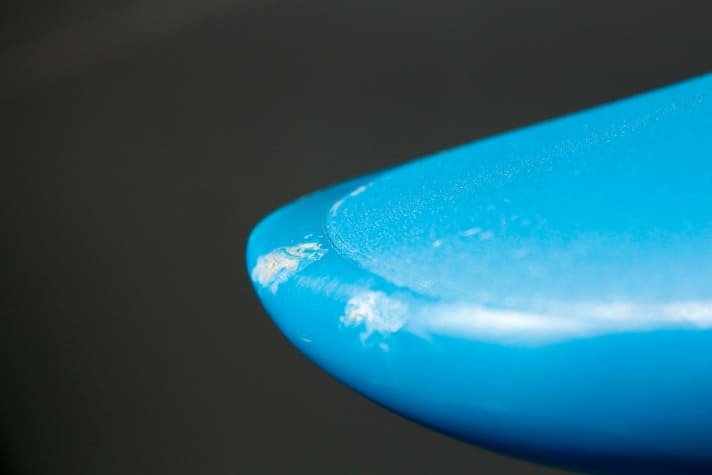
Opened boards (2), even if repaired, are problematic.
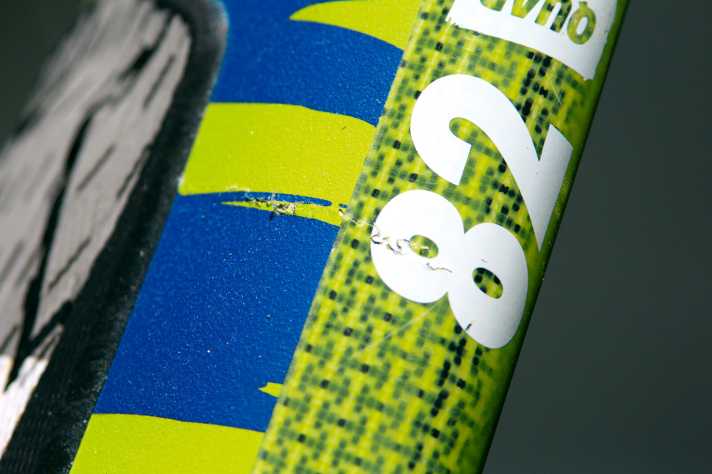
Whether the board is soft under the straps or in the mast track area (3) can unfortunately only be determined with certainty during an inspection. If so: Hands off, such damage is hardly repairable or quite expensive! The fin box and mast track should also be inconspicuous all round; unevenness or obvious paintwork may indicate that repairs have been carried out here and the board may have taken on water. If you want to know for sure, weigh the board and also check whether the strap inserts are still in good condition and the screws still grip properly.
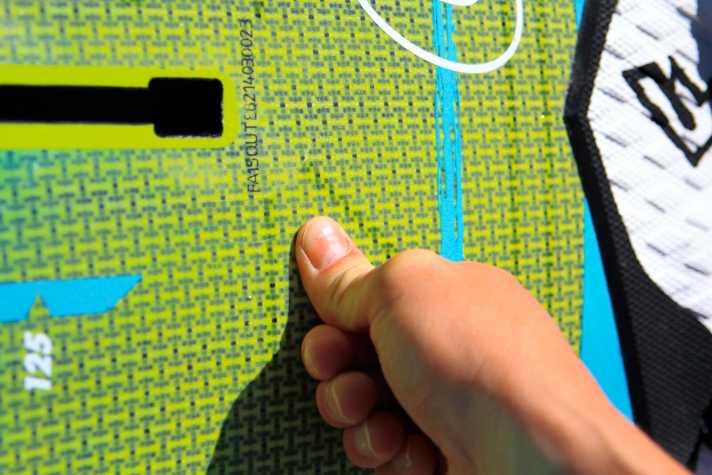
...
SAIL CHECK
- Monofilm still supple or totally brittle? - White discoloured creases in the stress area under the fork? - Are the straps on the top/variotop and trim block ok?
Sails can also be bought second-hand. For seasonal goods, the market prices are around 50 per cent of the list price. However, a sail that is only a few months old can be completely rocked through, while a three-year-old sail is still in top condition. As monofilm is known to suffer in the sun and does not particularly like frequent rolling in the sand, the previous history is an important factor. So ask whether the owner was only a weekend surfer on the Baltic Sea or whether the sail comes from a surf school and has been rigged for months under the burning Greek sun. Intact monofilm, which lasts a long time, feels soft and supple (1) and only has the usual and unavoidable creases.
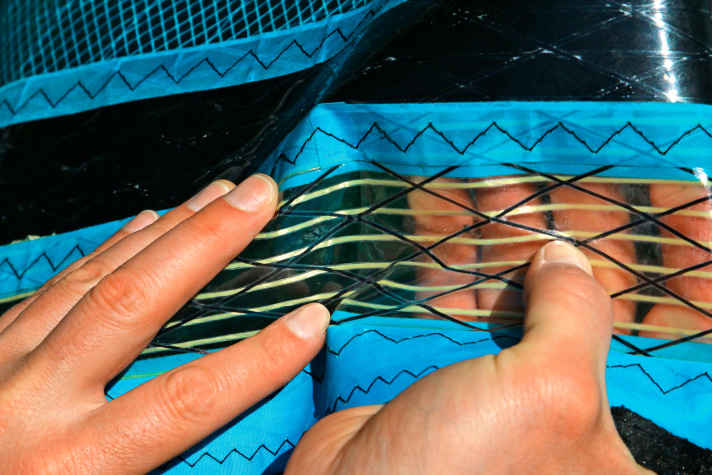
Larger and whitish discoloured creases (2) can also occur in almost new sails; to be on the safe side, these can be covered with transparent adhesive film to prevent tearing. If the film appears brittle and dry overall, it will tear quickly at the first impact. Minor damage to the mast sleeve (e.g. after mast breakage) or the foot of the sail can be tolerated and are usually only visual defects.
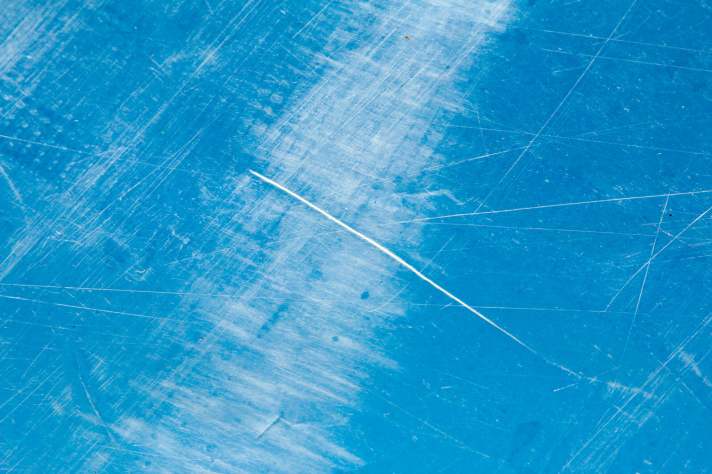
In addition to condition and size, the most important factor for sails is how they fit into the existing sail range. If you want to use an existing mast, you should of course pay attention to the length and the bending curve. You can find an overview of current bending curves and matching brands and models in surf 8/2013 or at www.surf-magazin.de under the search term "mast test". One last look should be taken at the webbing straps on the (vario) top and trim block (3). If these are chafed, they may soon tear and you should at least reduce the price a little.
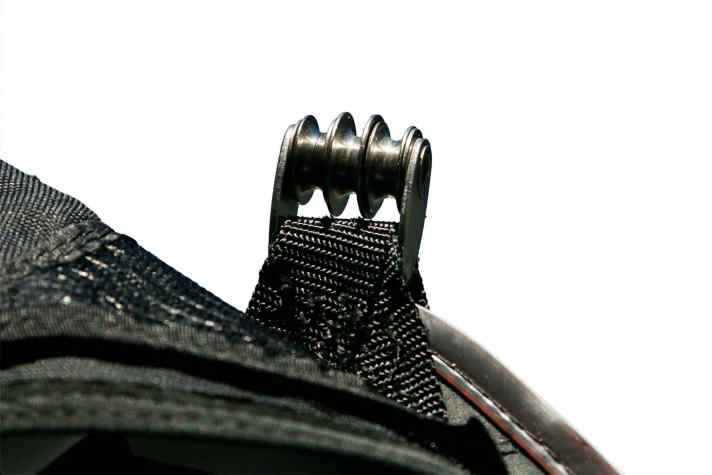
...
MAST-CHECK
- Plug connection without play? - Edges and cracks at the ends? - Length and bending curve suitable?
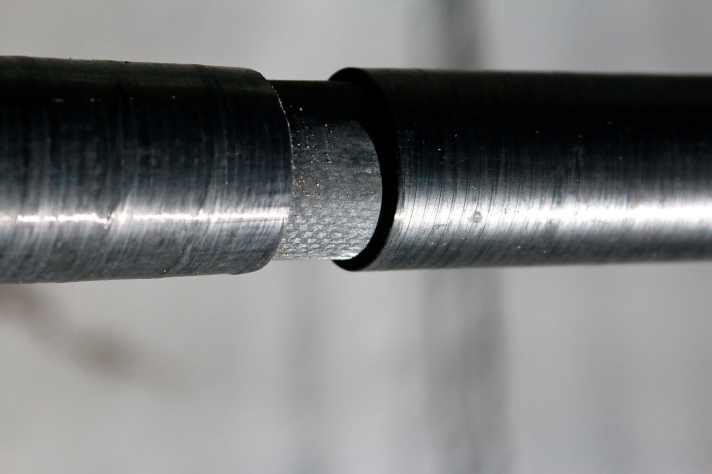
Unfortunately, anyone who buys a used mast often has to buy a pig in a poke, because the previous history is crucial: if the good piece has had rough contact with stones or the car park, damaged fibres can soon mean the end. Edges and cracks: Check whether the pole has visible edges and cracks at the connector (1) and the ends (2). If so, keep your hands off, there is a risk of breakage.
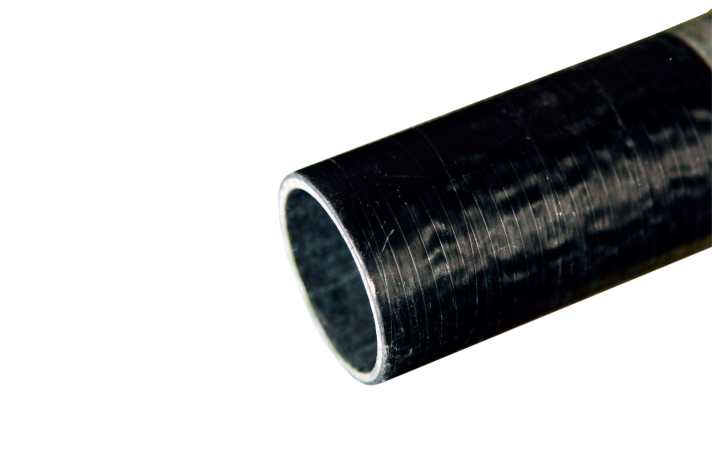
Abrasions: In the fork and camber area (3), these are unavoidable and harmless as long as they only affect the decor and have not noticeably affected the substance. Bent? If the previous owner has left his rig up for a long time without interruption, the mast may have bent and is then less powerful! It is therefore worth taking a critical look at masts from surf school stocks in particular. Plug connection: This should not have an excessive amount of play - if it does, sand and salt have already done their job and abraded the material.
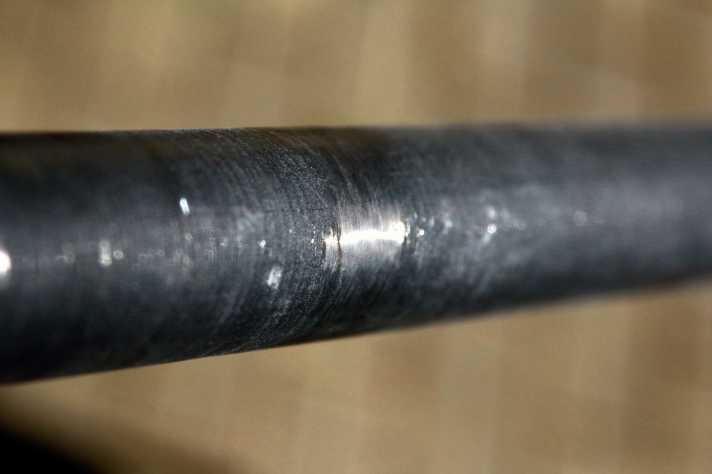
Compatibility: In addition, it is of course also crucial that the mast and sail fit together. An overview of Current bending curves and matching brands and models can be found in surf 8/2013 .
...
FORK CHECK
- Can the entire adjustment range be used? - Are the screw connections on the head piece worn out? - Pad intact? Fork trees are one of the parts where you can easily judge the condition yourself. Carbon forks are considered to be particularly stable in value; even after three years, they often still fetch 50 per cent of the list price. Why is that? Simply because they are worth it, as they cannot bend.
Edges and cracks: It is important that carbon forks do not have any obvious impact damage (cracks, edges, burrs) on the carbon, as these are predetermined breaking points, similar to masts.
Bent? Used aluminium forks are often available for less than 100 euros. They can bend due to skidding or hard landings. If the end piece can be pushed completely into the bars (1) , it is not bent. If this is not possible or only possible with a lot of force, the bars are bent and you may not be able to use the full adjustment range? Bent forks can still be used, but you should refrain from trying to straighten them, as the aluminium will be weakened and break.
Also check whether the variator locks (2) engage properly and in parallel.
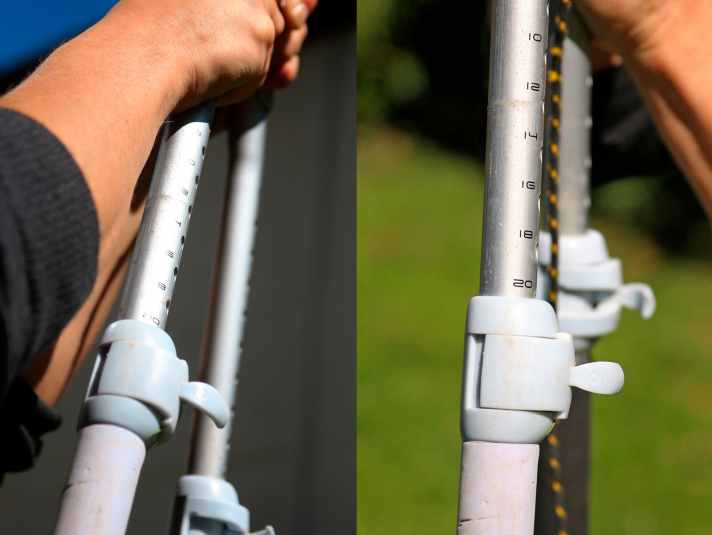
Corrosion: White corrosion dust (3) on the aluminium end pieces is normal if they are not used for a long time and will disappear if you take them in and out a few times. Caution: Never use oil or grease, otherwise half the beach will soon stick to your end piece.
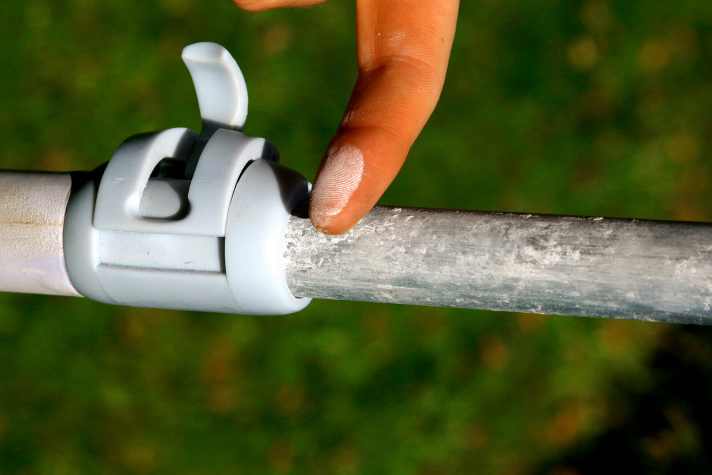
Screw connections: On many forks, the bars are screwed onto the headstock. If you want to know whether the connection is still holding, pull out the end piece and wiggle the bars. If they wobble back and forth, leave them alone. If they are firmly attached to the head piece, everything is OK.
Pad: Small imperfections are unavoidable, if the aluminium tube in the grip area (4) protrudes, it is better not to buy or to reduce the price considerably. The standard excuse that you can replace the pad is correct, but requires 150 euros in repair costs or a lot of labour. If you want to do it anyway, there's a workshop in the surf coat app.
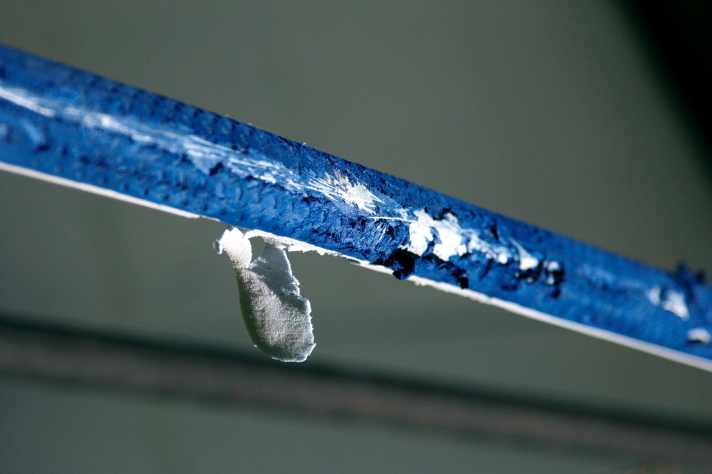
...
NEOPREN-CHECK
- Collar torn? - Seams and bonding intact?
Whether you only buy new Neos for hygienic reasons is up to you; after a run through in the washing machine, there's really nothing to stop you buying a second-hand Neo. Perhaps a more important reason for buying new from a shop is the fit, which is a decisive factor in whether the item is warm or not.
Collar: Often the archilles heel of Neos - tears in the collar area (1) are almost impossible to mend and are a criterion for exclusion.
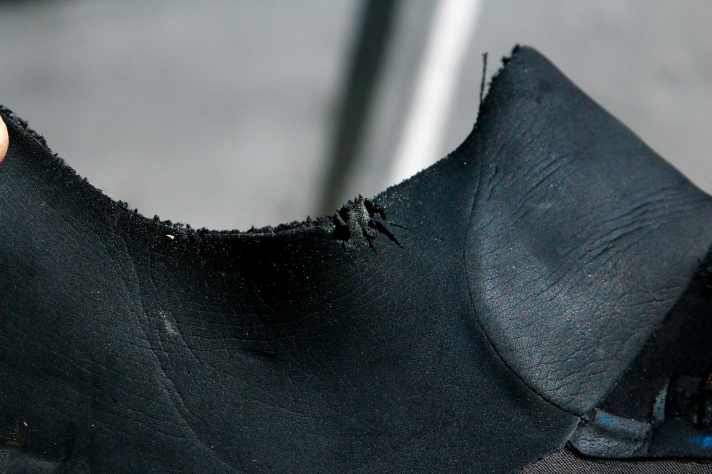
Seams: The seams are usually additionally glued from the inside. If the bonding (2) is already in tatters, the seams may no longer be tight.
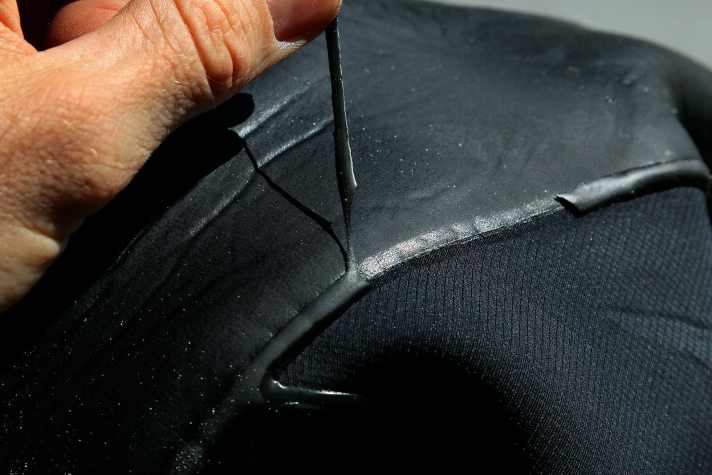
...
TRAPEZ-CECK
- Fit and type - belt straps chafed?
Often available second-hand for a fraction of the new price and with a manageable risk.
Fit: Ideally, you should put the harness on briefly and hang it somewhere to check the fit. Women should always buy a women's harness and not a small harness for men - the fit is completely different and adapted to different body types.
Webbing: The webbing often wears through after prolonged use. If these are intact, you can buy a harness that is several years old without hesitation.
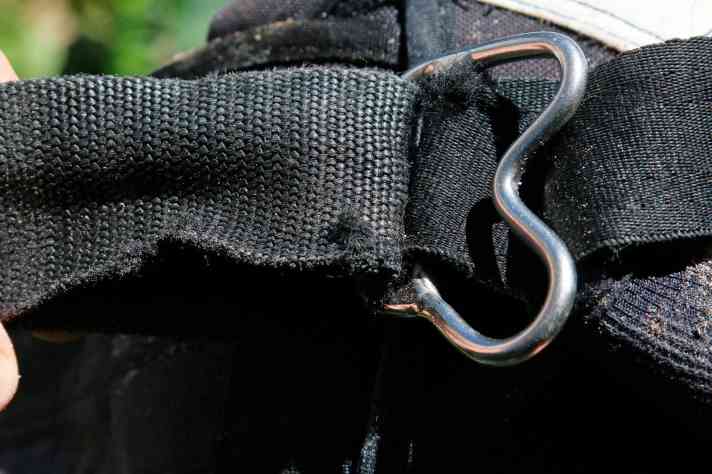
...
MAST FOOT CHECK
- Only buy new mast feet! - Check pins and rivets for extensions
Mast feet: Broken mast foot tendons and power joints (1) are one of the main reasons for dicey rescue operations on the water. Mast feet age even when not in use, the rubber becomes brittle and fragile. You should therefore always buy new ones.
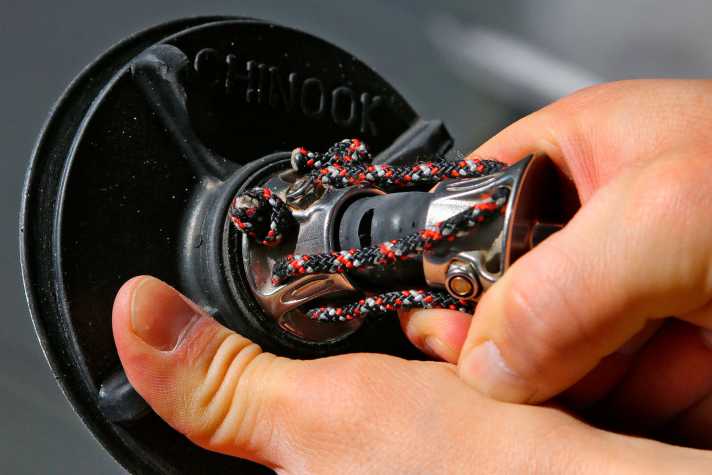
Mast extensions: Usually cheap and easy to buy second-hand. With carbon extensions, it is worth taking a look at the holes for the pins (2). These tend to wear out over time and get too much play. It is always important that the tube and plastic cup are still firmly connected and that the rivets (3) have no play.
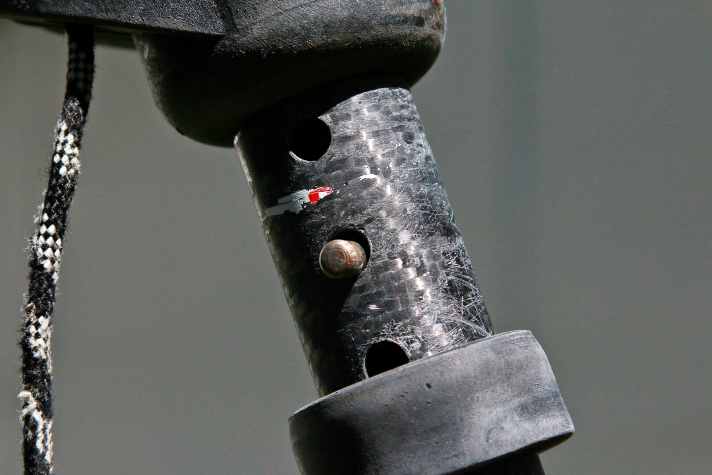
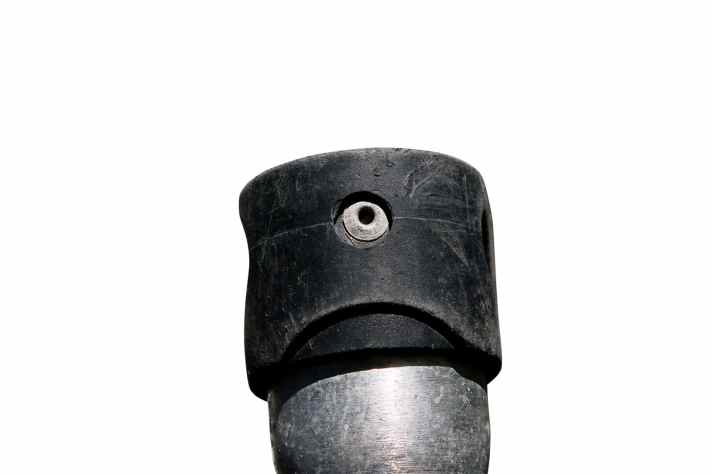
...
